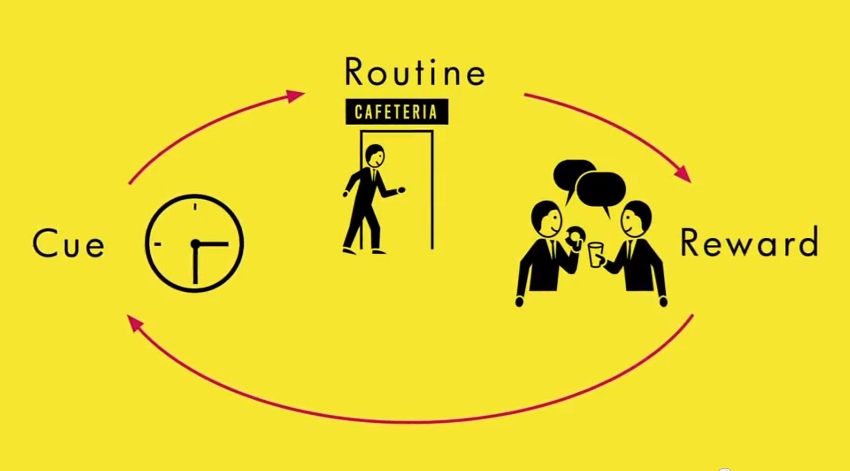I was in Boston a few weeks ago and had an opportunity to visit Harvard and its bookstore. When visiting one of the world’s leading educational institutions, the bookstore is intuitive about the way that Harvard is shaping the world. Unfortunately, I was unable to spend nearly as much time as I would have liked, but I did pick up a few books that have been helpful. One of those books is The Power of Habit by Charles Duhigg.
Harvard Business School does not have its strong reputation by accident. The faculty there train some of the world’s best and brightest and regularly churn out research and writing that is transformative for businesses. In The Power of Habit, Duhigg works explain why habits exist and how they can be changed. He also shows the incredible power of habits to not only shape who we are, but to literally control our activities.
Duhigg’s book is surprisingly readable and interesting. I’m pretty sure I’ve never picked up a book that discussed Starbucks, Alcoa, Donald McGavaran, the London subway system, Febreze, Rosa Parks, and Saddleback Church. I kept looking at my wife and saying, “Did you know…!?”
As much as anything, this book has challenged me to consider why I do what I do and why I practice (or lack) the routines I use every single day. Tim Brister has recently written a good article outlining the use of the Basal Ganglia as explained by Duhigg. Spoiler alert: Duhigg shows that regular habits allow us to reduce our mental activity and in so doing reduce mental fatigue. What this means is that you can save your brain power for more important things in life than deciding how to paste your toothbrush or which tie you should wear today.
Beyond that, I found the book to be very helpful for thinking about preaching and church growth. Duhigg shows how his research mimics the strategic design of Donald McGavran who argued that church growth is best accomplished when missionaries imitate the tactics of other successful movements, by appealing to people’s social habits, “The steady goal must be the Christianization of the entire fabric of which is the people, or large enough parts of it that the social life of the individual is not destroyed.” Rick Warren did this at Saddleback, he focused on “habitualizing faith.”
Of course, as it relates to preaching, a great deal of what we are doing is urging people to leave their sinful habits and take up Christ. We recognize what Duhigg may not, that the Holy Spirit works to make these things possible, but much of Duhigg’s research is still helpful.
I only dog-eared one page in this book (I reserve the “dog-ear” for those things that are especially important because), and that is the appendix called, “A Reader’s Guide to Using These Ideas.” As the title suggests, this short appendix is the ultimate application for the book. He breaks it down into chunks to help readers understand how to change their habits.
The framework looks like this:
- Identify the Routine: To understand your own habits, you ned to identify the components of your loops. Once you have diagnosed the habit loop of a particular behavior, you can look for ways to supplant old vices with new routines.
- Experiment with Rewards: To figure out which cravings are driving particular habits, it’s useful to experiment with different rewards.
- Isolate the Cue: The reason it is so hard to identify the cues that trigger our habits is because there is too much information bombarding us as our behaviors unfold. Ask ourself, do you eat breakfast at a certain time each day because you are hungry? Or because the clock says 7:30? Or because you kids have started eating? Or because you’re dressed, and that’s when the breakfast habit kicks in?
- Have a Plan: A habit is a choice that we deliberately make at some point, and then stop thinking about, but continue doing, often every day. TO re-engineer that formula, we need to begin making choices again. And the easiest way to do this, according to study after study, is to have a plan.
Notable Quotes:
- When a habit emerges, the brain stops fully participating in decision making. It stops working so hard, or diverts focus to other tasks. So unless you deliberately fight a habit–unless you find new routines–the pattern will unfold automatically.
- Habits never really disappear. They’re encoded into the structures of our brain, and that’s a hug advantage for us, because it would be awful if we had to relearn how to drive after every vacation. The problem is that your brain can’t tell the difference between bad and good habits, and so if you have a bad one, it’s always lurking there, waiting for the right cues.
- There are no organizations without institutional habits. There are only places where they are deliberately designed, and places where they are created without forethought, so they often grow from rivalries or fear.
- All firms are guided by long-held organizational habits, patterns that often emerge from thousands of employees’ independent decisions.
- For an organization to work, leaders must cultivate habits that both create a real and balanced peace and, paradoxically, make it absolutely clear who’s in charge.


